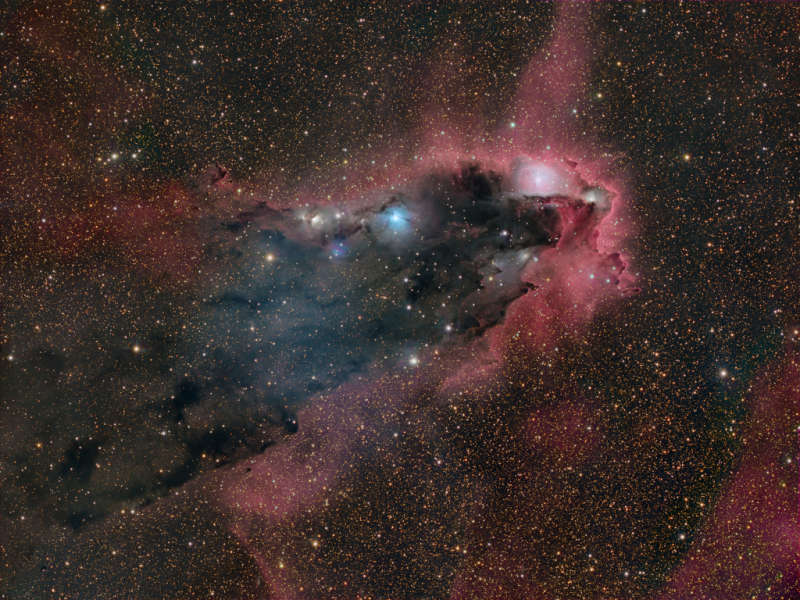Credit & Copyright: Mike Selby
Explanation:
In silhouette against a crowded star field
along the tail of the arachnological constellation
Scorpius,
this dusty cosmic cloud evokes for some the image of an
ominous
dark tower.
In fact, monstrous clumps of dust and molecular gas
collapsing
to form stars may well lurk within the dark nebula,
a structure that spans almost 40 light-years across this
gorgeous
telescopic portrait.
A
cometary globule, the swept-back cloud
is shaped by intense ultraviolet radiation from the
OB association
of very
hot stars in
NGC 6231,
off the upper right corner of the scene.
That energetic ultraviolet light also powers the globule's bordering
reddish glow of hydrogen gas.
Hot stars embedded in the dust can be seen as bluish
reflection nebulae.
This dark tower and
associated nebulae are about 5,000 light-years away.
Growing Gallery:
Moon Eclipses
Saturn in August 2024
1999 2000 2001 2002 2003 2004 2005 2006 2007 2008 2009 2010 2011 2012 2013 2014 2015 2016 2017 2018 2019 2020 2021 2022 2023 2024 2025 |
Январь Февраль Март Апрель Май Июнь Июль Август Сентябрь Октябрь Ноябрь Декабрь |
NASA Web Site Statements, Warnings, and Disclaimers
NASA Official: Jay Norris. Specific rights apply.
A service of: LHEA at NASA / GSFC
& Michigan Tech. U.
|
Публикации с ключевыми словами:
Scorpius - dark nebula - Скорпион - темная туманность
Публикации со словами: Scorpius - dark nebula - Скорпион - темная туманность | |
См. также:
Все публикации на ту же тему >> | |
